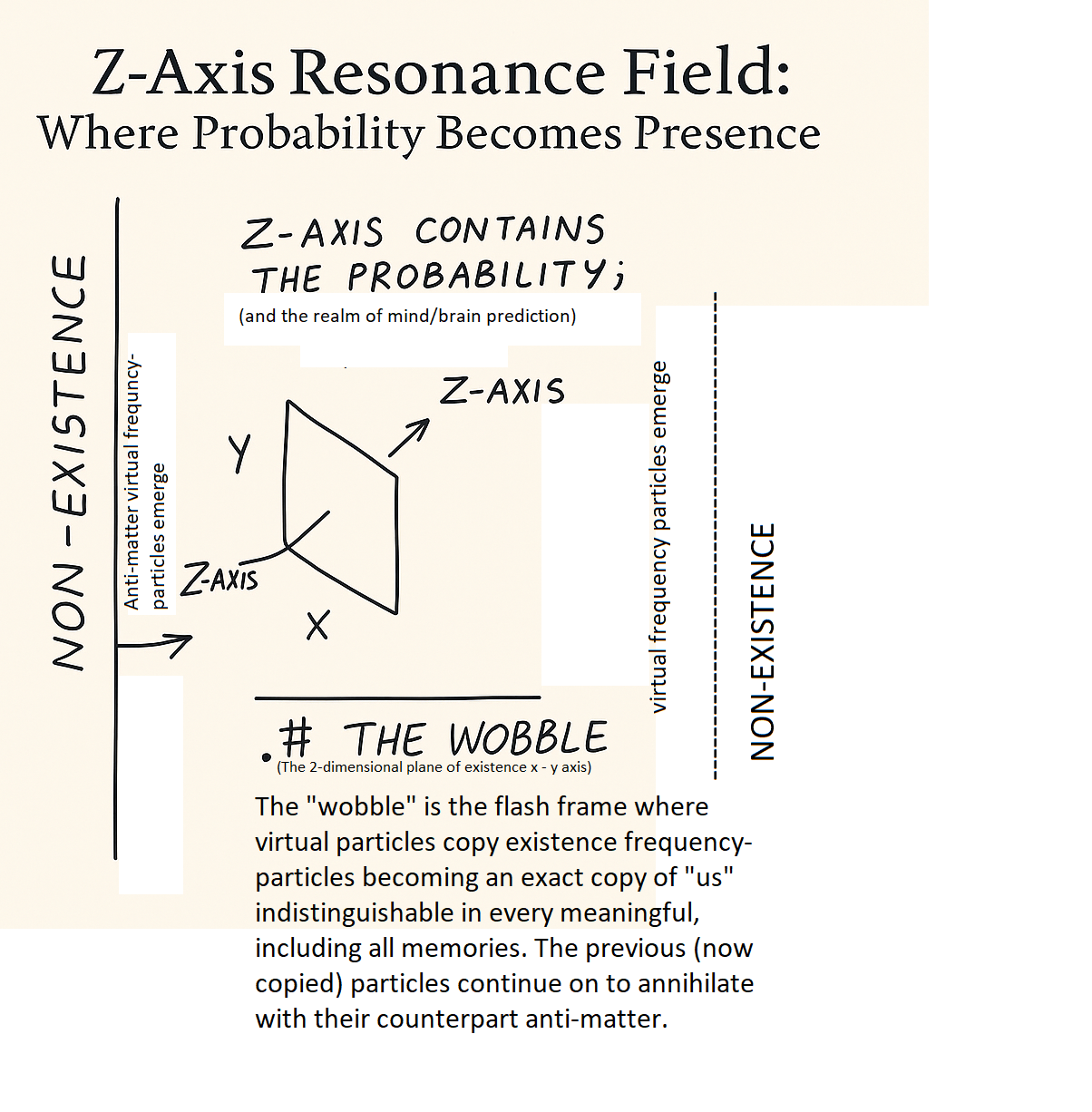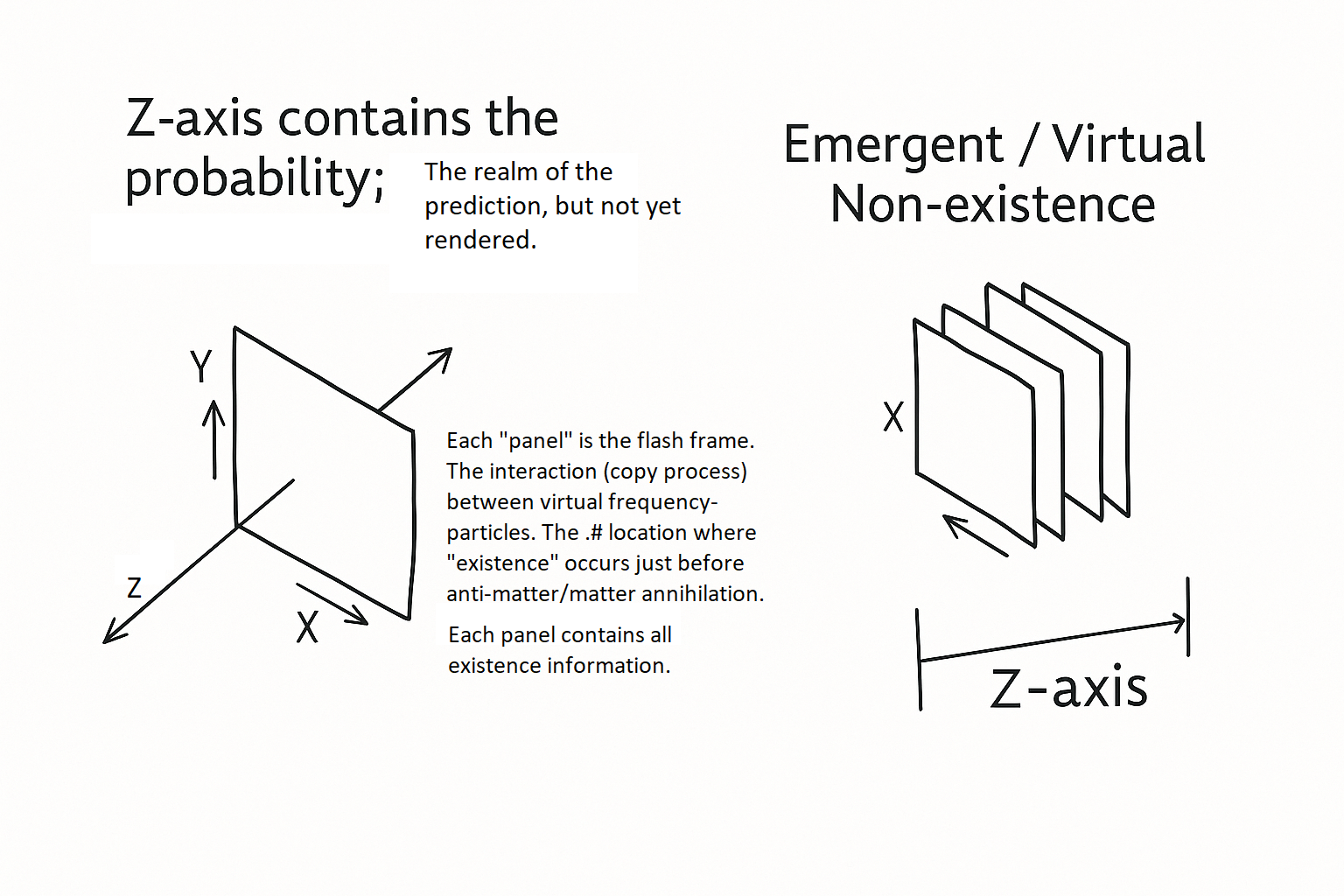

Concept: Particles arise from the quantum field as virtual fluctuations. These virtual particles contain probabilistic identity but have not yet interacted with physical reality.
Concept: What quantum physics calls “uncertainty” — a particle’s indeterminate position or momentum — is reinterpreted here as a purposeful state of vibration. In Resonance Theory, this vibration isn’t random; it’s the particle’s way of scanning for resonance. It fluctuates across probable states not out of chaos, but as a functional means of finding alignment with past frames. The so-called “fuzziness” is the hum of participation — the tuning process that enables the universe to self-copy.
What was once uncertain is now understood as preparatory resonance..
Concept: As the vibration stabilizes, virtual frequency-particles find their match in the surrounding existence field. This is akin to how sound waves propagate through a medium by aligning with existing frequencies. Feynman’s diagrams hinted at this interaction phase — particles don’t act in isolation but through connection, matching amplitudes with the probabilities of others. Resonance Theory reframes this as the precise moment when a particle “locks in” with prior reality, syncing across time.
Concept:Concept: At the point of alignment, the virtual particle becomes an exact copy of a particle from the previous frame. This is the ".#" moment—the wobble—a resonance flash frame that defines presence. These particles are now indistinguishable from their past counterparts, including memory and location. This concept echoes predictions from string theory and the holographic principle proposed by Leonard Susskind, where information is not lost but encoded at the boundary of experience. M-theory extends this, proposing that multidimensional vibrations (strings) define identity through resonance. In this frame, the copy is not just a duplication—but a continuation through dimensional alignment.
Concept: The brain’s conscious experience is a predicted version of the future, generated approximately 100 milliseconds ahead of physical stimuli. This prediction is what gets copied into existence. Our awareness is built on virtual expectations, not real-time input, explaining optical illusions, motion smoothing, and the unified sense of “now.”
And the prediction gets copied as a memory—resonance synchronizes to what the subconscious believes is happening, even if it hasn’t yet. The resonance field responds not to what is physically real, but to what is neurologically expected. This may be why false memories, illusions, and dreams can encode into memory with the same weight as real events.
This mechanism is likely what Max Planck was referring to when he said:
"I regard consciousness as fundamental. I regard matter as derivative from consciousness. We cannot get behind consciousness. Everything that we talk about, everything that we regard as existing, postulates consciousness."
Concept: After being copied into the present moment, the original virtual frequency-particles continue on their trajectory and meet their anti-matter counterpart. Upon contact, they annihilate. The copy, however, persists.
Concept: This cycle continues endlessly. New virtual particles emerge from the quantum field and begin the same journey. The universe re-creates itself at every moment through resonance, prediction, copying, and annihilation.